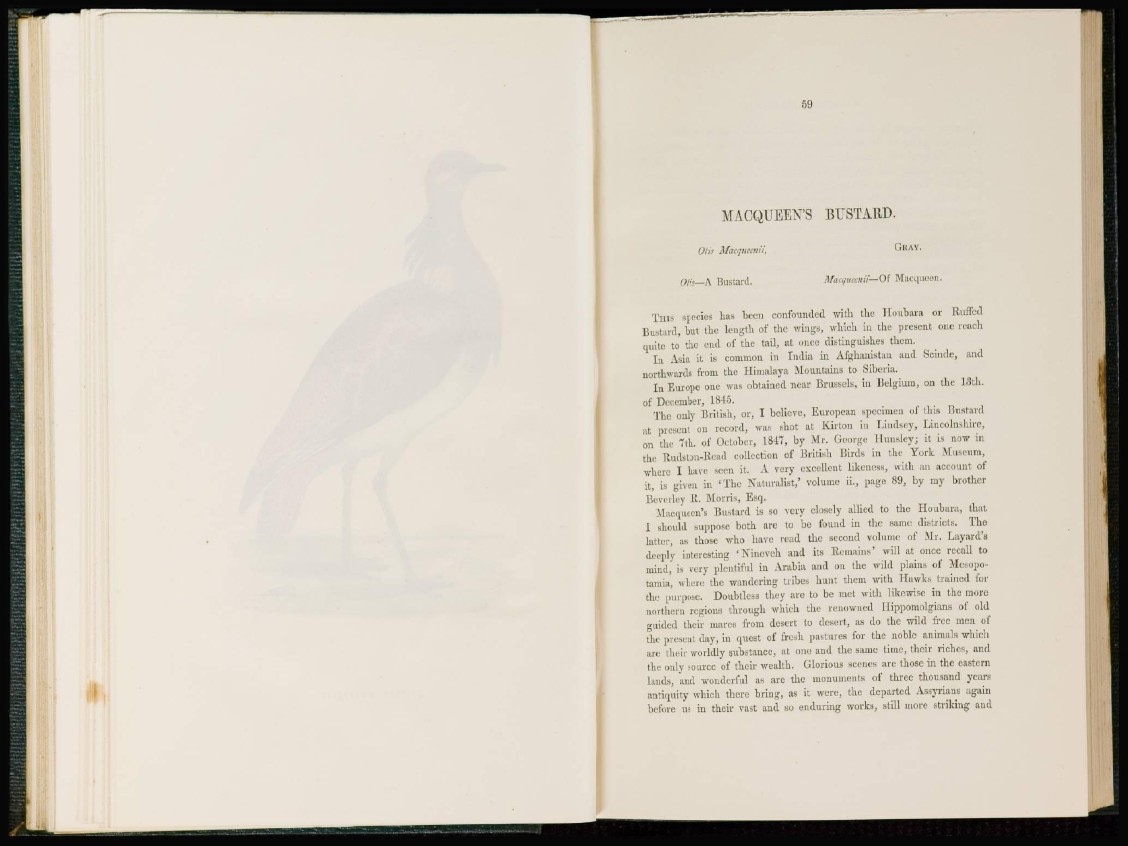
MACQUEEN'S BUSTARD.
Otis Macqueenii, GRAY.
Otis—A Bustard. Macqueenii—Of Macqueen.
THIS species has been confounded with the Houbara or Ruffed
Bustard, but the length of the wings, which in the present one reach
quite to the end of the tail, at once distinguishes them.
I n Asia it is common in India in Afghanistan and Scitide, and
northwards from the Himalaya Mountains to Siberia.
I n Europe one was obtained near Brussels, in Belgium, on the 13th.
of December, 1845.
The only British, or, I believe, European specimen of this Bustard
at present on record, was shot at Kirton in Lindsey, Lincolnshire,
on the 7th. of October, 1847, by Mr. George Hunsley; it is now in
the Rudston-Read collection of British Birds in the York Museum,
where I have seen it. A very excellent likeness, with an account of
it, is given in ' T h e Naturalist,' volume ii., page 89, by my brother
Beverley R. Morris, Esq.
Macquecn's Bustard is so very closely allied to the Houbara, that
I should suppose both are to be found in the same districts. The
latter, as those who have read the second volume of Mr. Layard's
deeply interesting 'Nineveh and its Remains' will at once recall to
mind, is very plentiful in Arabia and on the wild plains of Mesopotamia,
where the wandering tribes hunt them with Hawks trained for
the purpose. Doubtless they are to be met with likewise in the more
northern regions through which the renowned Ilippomolgians of old
guided their mares from desert to desert, as do the wild free men of
the present day, iu quest of fresh pastures for the noble animals which
are their worldly substance, at one and the same time, their riches, and
the only source of their wealth. Glorious scenes are those in the eastern
lands, and wonderful as are the monuments of three thousand years
antiquity which there bring, as it were, the departed Assyrians again
before us in their vast and so enduring works, stdl more striking and